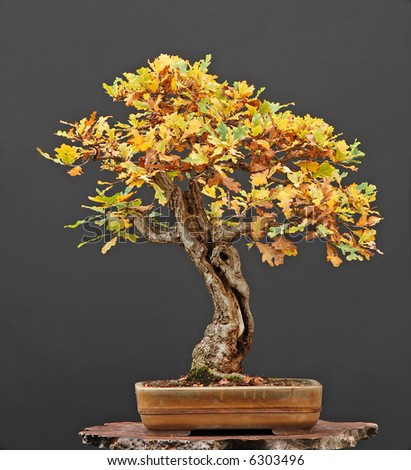BONSAI STYLE
Ever thought of having real trees as part of your wargames or 54mm set up well listen to this.
Bonsai styling is a passion and has certain specific and unique designs for the plant. There are various styles of a bonsai tree that have been passed on from the Japanese and the Chinese to the western world. Chief amongst them are the formal upright, informal upright, slanting style, cascade and the semi-cascade styles.
The formal upright style is attained when the tree is left in the outdoors with the essential conditions. This is a formal upright style where the trunk is formally upright or erect. The trunk however should have a natural narrowing from the base of the tree to the apex of the plant. The branches of the tree must be spaced in a methodical manner. A multi directional view must be looked at, before doing the symmetry in order to make the branches look balanced from all directions. Some of the species that form the formal upright style when worked with are the pines, spruces, junipers, etc.
The informal upright style is one where the branches of the tree bend in a fashion as to provide shade or to move away from the current of air. The trunk must twist towards the left or the right but not towards the eye of the viewer. This goes for the branches also. The preferred species with this style are the Japanese and the Trident maple.
A slanting style of a bonsai tree is gained when the slant on the branches and trunk of the tree occurs naturally due to rocking winds or low sunray exposure during the development stages. The trunk has a leaning stature despite its hunch. The roots look as if supporting the weight of the leaning tree. The conifers are made for this style. Many other species also do well with this style.
The cascade style of bonsai is one where the development tip of the cascade goes below the depth of the pot. The trunk tapers almost naturally as if moving against the gravitational force. The branches move high aspiring for some sun beams. The trunk is a twisting kind like the streams of water gushing from the mountains. Most species can fall in this category if they don’t show hints of upright growth.
The semi-cascade style is pretty similar to the cascade style except that the point or tip of this style does not move out from the base of the container. It stops at the base. The semi cascade style of growth is seen on trees that grow on cliffs usually. The trunk of the tree is not angled in a definite fashion. Here too, the roots that are exposed around the base of the pot play a predominant role of balancing the tree. However the species that work well in this variety are the junipers, cedars and flowering cherries.

Ever thought of having real trees as part of your wargames or 54mm set up well listen to this.
Bonsai styling is a passion and has certain specific and unique designs for the plant. There are various styles of a bonsai tree that have been passed on from the Japanese and the Chinese to the western world. Chief amongst them are the formal upright, informal upright, slanting style, cascade and the semi-cascade styles.

The formal upright style is attained when the tree is left in the outdoors with the essential conditions. This is a formal upright style where the trunk is formally upright or erect. The trunk however should have a natural narrowing from the base of the tree to the apex of the plant. The branches of the tree must be spaced in a methodical manner. A multi directional view must be looked at, before doing the symmetry in order to make the branches look balanced from all directions. Some of the species that form the formal upright style when worked with are the pines, spruces, junipers, etc.
The informal upright style is one where the branches of the tree bend in a fashion as to provide shade or to move away from the current of air. The trunk must twist towards the left or the right but not towards the eye of the viewer. This goes for the branches also. The preferred species with this style are the Japanese and the Trident maple.
A slanting style of a bonsai tree is gained when the slant on the branches and trunk of the tree occurs naturally due to rocking winds or low sunray exposure during the development stages. The trunk has a leaning stature despite its hunch. The roots look as if supporting the weight of the leaning tree. The conifers are made for this style. Many other species also do well with this style.
The cascade style of bonsai is one where the development tip of the cascade goes below the depth of the pot. The trunk tapers almost naturally as if moving against the gravitational force. The branches move high aspiring for some sun beams. The trunk is a twisting kind like the streams of water gushing from the mountains. Most species can fall in this category if they don’t show hints of upright growth.

The semi-cascade style is pretty similar to the cascade style except that the point or tip of this style does not move out from the base of the container. It stops at the base. The semi cascade style of growth is seen on trees that grow on cliffs usually. The trunk of the tree is not angled in a definite fashion. Here too, the roots that are exposed around the base of the pot play a predominant role of balancing the tree. However the species that work well in this variety are the junipers, cedars and flowering cherries.

No comments:
Post a Comment